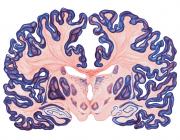Interactions of top-down and bottom-up mechanisms in human visual cortex.
Publication Year
2011
Type
Journal Article
Abstract
Multiple stimuli present in the visual field at the same time compete for neural representation by mutually suppressing their evoked activity throughout visual cortex, providing a neural correlate for the limited processing capacity of the visual system. Competitive interactions among stimuli can be counteracted by top-down, goal-directed mechanisms such as attention, and by bottom-up, stimulus-driven mechanisms. Because these two processes cooperate in everyday life to bias processing toward behaviorally relevant or particularly salient stimuli, it has proven difficult to study interactions between top-down and bottom-up mechanisms. Here, we used an experimental paradigm in which we first isolated the effects of a bottom-up influence on neural competition by parametrically varying the degree of perceptual grouping in displays that were not attended. Second, we probed the effects of directed attention on the competitive interactions induced with the parametric design. We found that the amount of attentional modulation varied linearly with the degree of competition left unresolved by bottom-up processes, such that attentional modulation was greatest when neural competition was little influenced by bottom-up mechanisms and smallest when competition was strongly influenced by bottom-up mechanisms. These findings suggest that the strength of attentional modulation in the visual system is constrained by the degree to which competitive interactions have been resolved by bottom-up processes related to the segmentation of scenes into candidate objects.
Keywords
Journal
J Neurosci
Volume
31
Pages
587-97
Date Published
01/2011
ISSN Number
1529-2401
Alternate Journal
J. Neurosci.
PMID
21228167

